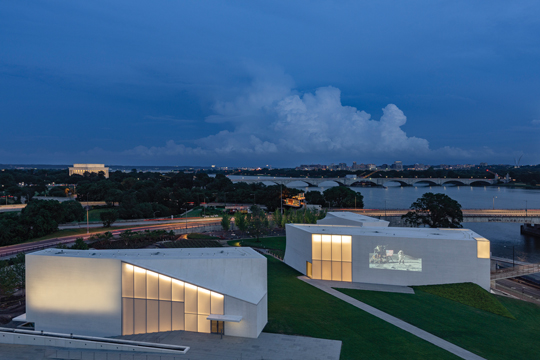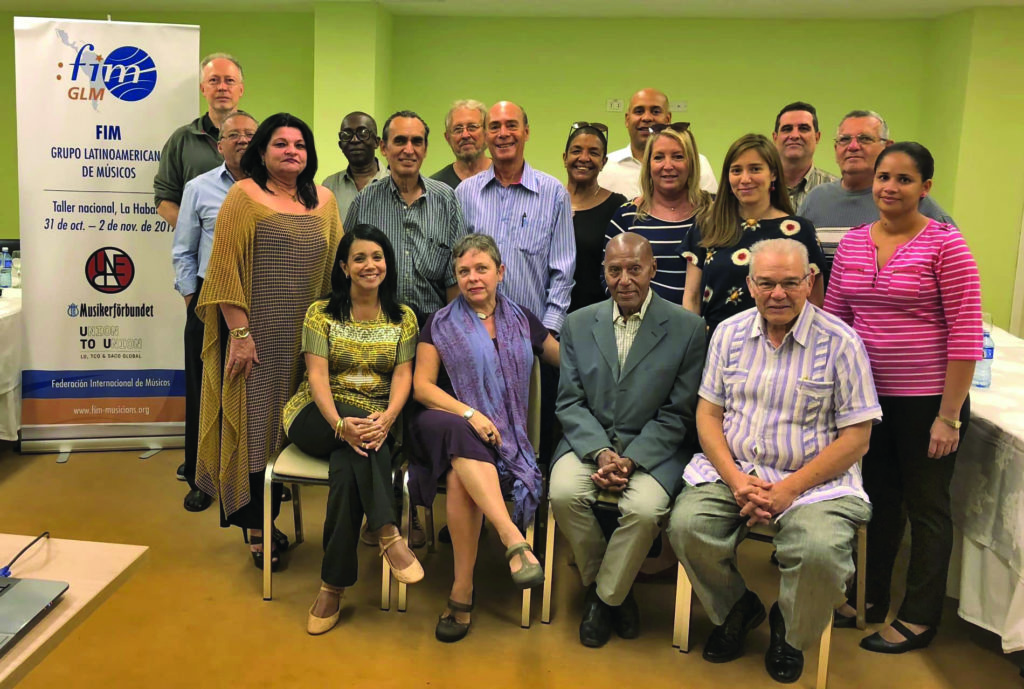During Black History Month the AFM celebrates Black artists whose music changed the world. From Robert Johnson’s blues to Sister Rosetta Tharpe’s pop-gospel, they are indelibly linked to a cultural framework in American history, rooted in social justice. Yet, it’s impossible to discuss AFM history and its fight for musician rights without examining the segregation of Black musicians within the Federation during the early 20th century.
There was never an AFM directive or bylaw mandating segregation, yet more than 50 Black locals were established alongside their white counterparts in cities large and small. In fact, most of today’s hyphenated locals—for example, 9-535 (Boston, MA); 10-208 (Chicago, IL); 161-710 (Washington, DC); 65-699 (Houston, TX); and 174-496 (New Orleans, LA)—reflect the merging of Black locals with white locals.
The Federation granted Black musicians charters to form their own locals with the approval of the nearest existing local. The motivations for founding the Black locals varied. Admission tests, which focused heavily on European classical training, frequently barred Black musicians from joining existing locals. Local officers who judged the worthiness of potential members were often motivated by their own bias.
Some AFM locals focused heavily on supporting musicians in the broadcast industry, under motion picture contracts, or in symphony orchestras, where Black musicians were often excluded. With separate locals, Black musicians were able to organize around their own worksites and genres. There were economic and cultural advantages. Plus, as separate locals, they were guaranteed delegate representation at national AFM Conventions. Tight communities were built around Black meeting halls, which provided venues for rehearsals, jam sessions, and socializing.
The first Black local predated the AFM. Local 44, the Great Western Union (Colored) of St. Louis, formed independently and was chartered into the AFM in 1897, along with St. Louis Local 2. In Chicago, Local 208, was chartered in 1902, and eventually became the largest and most powerful of Black AFM locals. It was created by Black musicians who were refused membership into Local 10.
In Boston, musicians had a single integrated office until 1915, when Local 535 split off, allowing Black musicians performing in jazz clubs to have their own identity. In New Orleans, Black Local 496 was organized by musicians working on Mississippi riverboats, who previously traveled to the closest Black union in Mobile, Alabama, to file contracts.
Weak and Fragmented Union
This partitioning of locals was problematic. In some cities, Black musicians lost work because they were unable to join the main local, or they were banned from working in certain clubs or neighborhoods. Other times, they were subject to further discrimination and had lower pay scales that were exploited by employers. The result was a weaker, fragmented union.
In a 2003 IM article, Otis Ducker, life member of Local 161-710 and former AFM IEB member, who chaired the merger committee for Black Local 710, and later served on the AFM’s Diversity Council, reflected on the situation: “During desegregation, musicians across the Federation came to realize they were simply working against each other’s interests.”
But the road to a unified AFM was difficult. Black musicians knew that their fight for equity would not end with the unification of their locals. Their drive for representation and a voice in the community at times resulted in strong resistance to amalgamation.
The first merger took place in Los Angeles, where younger musicians saw the situation of separate unions as untenable. Their publicity campaign targeted both Local 47 and Black Local 767. Following a long series of negotiations, Local 767 was dissolved and all assets transferred to Local 47 in 1953.
At the 1957 AFM Convention, the unified Local 47 delegates were so pleased with the result that they submitted a resolution calling for desegregation of all AFM locals. Fearing loss of autonomy, effectiveness, financial assets, and stability, 56 Black delegates (along with four white delegates), signed a petition opposing forced integration and the resolution failed to pass.
Not all Black locals were opposed to merger. In San Francisco, Black Local 669 had long sought to merge with Local 6, which had refused. That merger was ultimately forced by the passing of California’s Fair Employment Practices Act of 1959, which prohibited segregated locals.
Musicians Take a Stand
In the early 1960s, the tide continued to turn. More groups were multi-racial and conductors and musicians took it upon themselves to take a stand against discrimination. Before embarking on its 1963 tour of the American South, the Minneapolis Symphony Orchestra Association adopted the policy of not performing for segregated audiences. While on tour in Birmingham, Alabama, The Cleveland Orchestra refused to perform on the city’s segregated stage without its Black cellist Donald White.
In a 2017 IM article, Local 148-462 (Atlanta, GA) member William Bell recalled touring with Stax Revues in the early ’60s, an interracial tour. “We were like 50/50 with the band and the artists,” says Bell. “We caught a lot of flak, but we tore down barriers because we were a tight-knit organization. If we stopped somewhere to have lunch and they would not accept Blacks in the restaurant, none of us went in. We set our parameters. Some cities wanted to have two performances for Blacks and whites and we insisted on one performance for everybody.”
Meanwhile, AFM merger negotiations slowly continued. A March 4, 1964, merger deadline set by AFM International President Herman Kenin came and went. But, by 1967, merger agreements had been initiated in 19 cities.
Among the most contentious negotiations were those that took place in Chicago, where Black musicians had been excluded from working in much of the job market. Secret merger talks began in 1962 but it would take another four years and a Federation mandate to create Local 10-208 on January 11, 1966.
Houston AFM member Charles Smith recalls his alma mater, Texas Southern University, as being center stage for the Civil Rights Movement in Houston. It was one of his instructors, Campbell “Skeets” Tolbert, who helped to organize the Black musicians to create Local 699 and campaigned to allow them the opportunity to play in the “union” houses. Later, Tolbert was instrumental in merging the unions and served on the board of Local 65-699.
According to Local 65-699 member James Williams, the main incentive for the merger was financial as Local 699 was highly successful and Local 65 had been operating in the red. Although there was little opposition to the merger the musical landscape for Black musicians didn’t initially change much.
“You have to understand the climate then,” says Williams. “Racism, segregation affected every bit of society. Living in the south, it was just part of your daily process.”
In Houston, the road to integration was more the result of the arrival of several well-known Black musicians who had toured nationally with integrated bands, among them Cedric Haywood, Arnett Cobb, and Milt Larkin. Local white musicians wanted to play with them, so integration began with the jazz and R&B club scene. Later, Larkin served on the board of the combined local.
The final segregated local, 274 in Philadelphia, had long refused to integrate. Its AFM charter was revoked in 1974 and Black members who wanted to be part of the Federation had no choice but to join Local 77.
More Work to Be Done
While the mergers may have improved financial conditions for some Black musicians, the number of Black delegates at national AFM Conventions was greatly reduced. Also, doors didn’t immediately open, especially in classical music. In 1979, there were still just 49 Black musicians in 28 major orchestras. Blind auditions began in the 1970s to eliminate both racial and gender bias, but an American League of Orchestra’s study from 2014 showed that only 1.8% of musicians in professional orchestras identified as Black.
The AFM established a Diversity Council in 1996, which became its Diversity Committee in 2003. Among initiatives is the Diversity Award program that celebrates efforts to create more inclusive membership. The AFM also instituted diversity training for local officers. There is still work to be done.
In the broader orchestral world, initiatives like the Sphinx Organization, Black Orchestral Network, and League of American Orchestra’s Inclusive Stages aim to open doors for young musicians of color and explore ways to further diversify classical concert stages. Individual orchestras have launched youth programs in underserved communities and established fellowships targeting people of color.
















